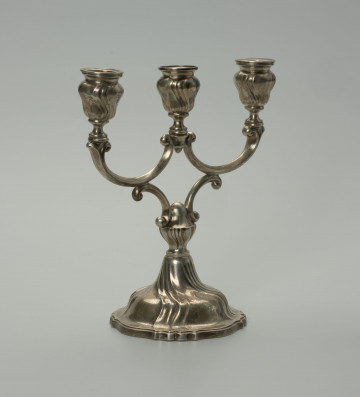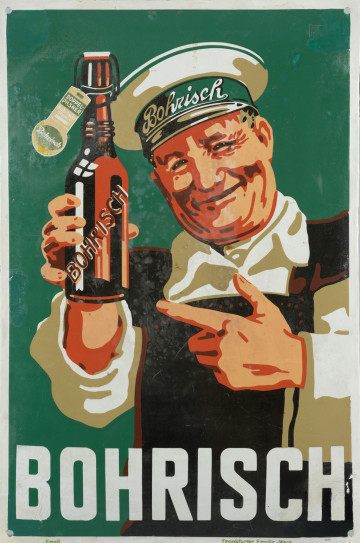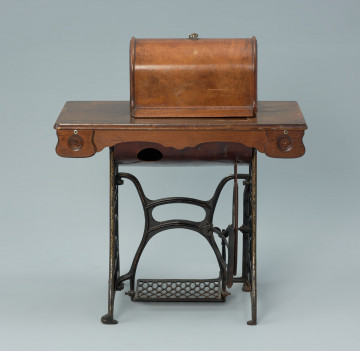
Three-armed candlestick
1901 — 1940
National Museum in Szczecin
Part of the collection: Craft and industry products of Szczecin
The earliest shaving accessories known from archaeological excavations were made of flint or shell. With time they were replaced by sharpened metal knives, leading to the development of contemporary razors at the turn of the 19th and 20th centuries. One of the major centres that made razors was the city of Solingen in northern Germany, which since the Middle Ages was known for the metal cutting tools manufactured there. Factories producing such tools also existed in pre-war Szczecin. The residents could buy them straight from the Klass Friedrich Stettin factory, among others. Razors produced there – set in in elegant two-piece frames – were a staple for many men, for whom shaving was the basis of everyday hygiene. Their accessories could also be found in the shaving salons operating in the city, which were usually connected with barber shops. With time, the demand for razors made by Klass Friedrich Stettin, as well as by other manufacturers, started to decline, due to the fact that they were increasingly replaced by much more convenient modern razors.
Anna Lew-Machniak
Author / creator
Dimensions
cały obiekt: height: 12 cm, width: 13 cm
Object type
accessories
Creation time / dating
Creation / finding place
Identification number
Location / status

1901 — 1940
National Museum in Szczecin

1918 — 1945
National Museum in Szczecin

1924 — 1933
National Museum in Szczecin
DISCOVER this TOPIC
National Museum in Lublin
DISCOVER this PATH
Educational path